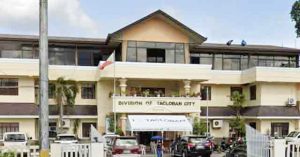Blame to 2-year closure of schools due to COVID-19

TACLOBAN CITY– About 5,209 students both in the elementary and secondary levels were identified to be ‘non-readers’ and ‘struggling learners’ by the schools division here.
And this big number of non-readers and struggling students is alarming, reason they have devised the needed intervention to at least address the ‘gap,’ Nilo Eder, the information officer of the Tacloban city schools division, said on Wednesday (Nov.6).
Based on their assessment, 79 students were identified to be non-readers or those who cannot read at all while 5,288 were classified as struggling learners or can but read but with difficulty.
Eder, however, did not say how many of the 5,288 students are in the elementary and secondary levels.
“We are conducting reading and numeracy assessments, like pre-assessments and post-assessments. This is how we identify the level of proficiency of our learners. The assessments led us in identifying the learning gaps. Correspondingly, we implement interventions to address learning gaps,” Eder said.
The intervention mostly involved a tutorial method for these students at the school level and another post-assessments are being done to determine the improvement of these students, he added.
The students identified as non-readers or struggling were from the 56 public schools in the city, both in the elementary and secondary levels.
“So far, there are significant improvements noted. However, there are still learners who need help. So we continue with our initiatives,” Eder said.
A Grade 1 teacher in one of the central schools in the city, said that out of her 25 students, almost half of them were having difficulty in reading.
“Teaching these learners is a struggle on my part as I have to give them special time and attention. So what I did was I asked my co-teacher to handle my learners who could now read as I give focus to these learners,” the teacher, who declined to be named, said.
And since she made these interventions, she is seeing some improvements in these non-reader learners, the teacher said.
Eder said that the pandemic due to coronavirus disease (COVID-19) that hit the country was the primary reason why this problem cropped up.
“It is a fact that the pandemic has really affected the quality of education. Thus, these learning gaps. It will take years to recover,” he said.
“Of course, we are not happy about it. We acknowledge that there is a problem to be addressed with urgency. And we are getting positive results with our initiatives. We are very optimistic we will be able to achieve the desired improvements we wish for our learners,” Eder added.
Meantime, Eder said that they are happy that the Latter-day Saint (LDS) Charities for providing some school-based tutorial materials to the 56 schools where there are non-readers and struggling students.
“We are confident that these materials will significantly contribute to the division’s ongoing efforts in addressing learning gaps exacerbated by the two-year closure of schools due to the COVID-19 pandemic,” Eder said.
Among the donated items by the LDS Charities were tutorial cards, whiteboards, pencils, notebooks, tubs, flash drives, worksheets, handbooks, and laminating films.
(JOEY A. GABIETA)



